Light as Scenery and Special Effects page 4 of 4
Fog
Fog is an effect usually created by heating up a solution of water and glycol-type substance, then spraying it into the air. It usually floats randomly and dissipates quickly, usually leaving no remnants.
| Note: always use “fog fluid” recommended by the specific fog machine’s manufacturer and be sure to use a type of solution that everyone can live with (literally!) Fog is white or gray, can be scented, and can be thick enough to block the view of the audience. |
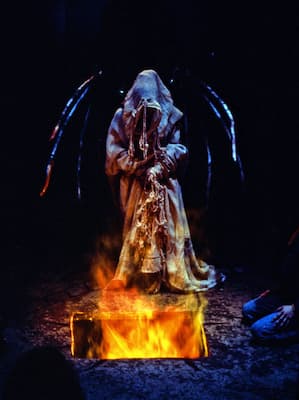
"Tuma: Eagle's Gift" production photo by costume designer Tara Maginnis.
Lighting by Kade Mendelowitz
Lighting by Kade Mendelowitz
To create low-lying fog, put dry ice, a block of frozen carbon dioxide, into heated water. The hotter the water, the more fog the dry ice will create. A 25-pound block of dry ice will usually last about 15 minutes. This fog, because it is heavier than air, will “hug the floor”, roll into the audience; always try to find the lowest level around. The fog is cold in temperature and may leave some water residue on the floor.
Another way of creating low-lying fog is to use liquid nitrogen or carbon dioxide to cool special fog fluid. The result is very similar to dry ice but tends to leave less residue, and the effect can be sustained longer than when using dry ice which dissolves quickly. Low-lying fogs are white and thick in nature.
Haze is longer lasting effect, where a small amount of fog fluid (again based in water/glycol or oil) is heated and distributed in the air. Haze tends to be white or gray, lingers in the air, and often takes at least 15 minutes to “fill the air”. Haze can make light beams visible, usually without getting in the way of the audience’s ability to view the action on stage. Often, due to air conditioning and other air ventilation systems, haze makers must be run during performances to keep the desired effect active.
Burning something, from flash paper, to special liquids, to incense and products similar to “smoke cookies” creates smoke. Smoke can be tinted a color, can be created quickly, and often dissipates quickly, though it just as often leaves a harsh smell in the air and has a negative effect on audience and performers afflicted by asthma. Some smoke, like ammonium-chloride (salaminiac) can produce a long-lasting haze effect but is an extremely toxic solution – know what your smoke effects are created with!
Fluorescent (ultra-violet effects). Ultra-violet light is not within the spectrum of visible light for humans, but it can make certain other materials and paints fluoresce. This capability can be an extraordinary effect when used for the right occasion. To work properly, the lighting normally has to be dim in the affected areas, and ultra-violet must be supplied, a use which can be a tricky and expensive proposition in a large theatre scale.
Fluorescent-activated paints are now available. This sample uses “invisible” paint that can be hidden into the painting of scenery so that the set takes on a drastic change when ultra-violet light is introduced to the scene.
True masters of this technique have achieved “day” (regular paint) and “night” (invisible paint) drops that change before the audience’s eyes via the proper lighting.
A quick note about ultraviolet lights:
A black ultraviolet (UV) light looks dark violet, but most of the light it emits is actually in the ultraviolet range of the spectrum, which is invisible to most human eyes. Technically, the receptors in our eyes can see some ultraviolet; however, the lens on the eye filters out ultraviolet because it can be harmful. Therefore. most humans cannot see UV.
The glow we see from UV paints, many fluorescent colored items, and many white fabrics all contain phosphors. A phosphor is any substance that absorbs energy and re-emits it as visible light. While being cast by a blacklight, phosphors convert the UV radiation they receive into visible light which we perceive as glowing. Fingernails and teeth contain natural phosphors, and many laundry detergents include phosphor-based optical brighteners designed to give clothing that “whiter than white” effect.
There are specially designed paints, some of which appear “invisible” under normal lighting, which contains phosphors that are activated under UV. This activation can make for an exciting effect on stage; for example when a daytime cityscape backdrop turns to night when ultraviolet wash is added to the stage.
Images courtesy UVFX Scenic Artists.
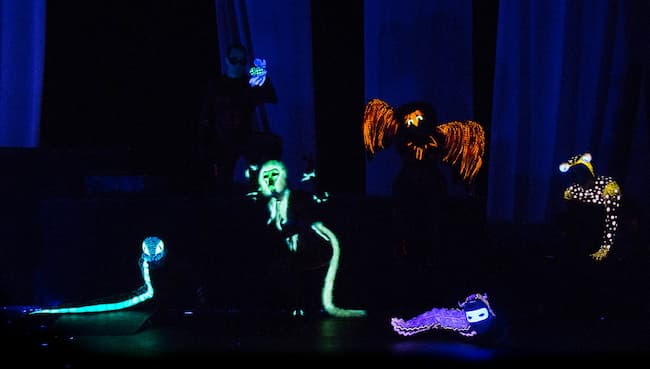
“The Ash Girl” Director and Scenic Designer: Brian Cook,
Costume Designer: Bethany Marx, Photo by Lighting Designer Kade Mendelowitz.
The costumes of some of the characters for this production were painted with UFX paints so that their introductory scene could display how "otherworldy" they were.
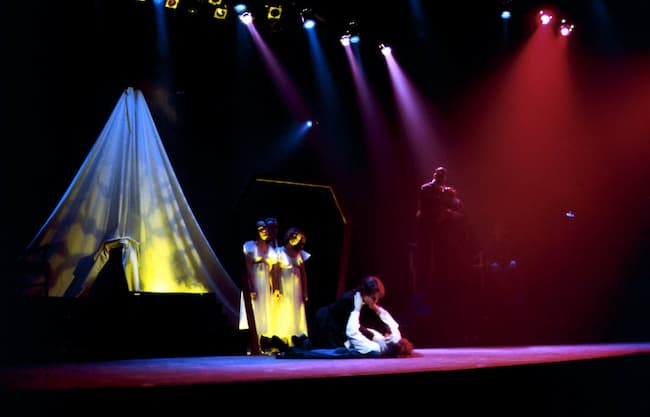
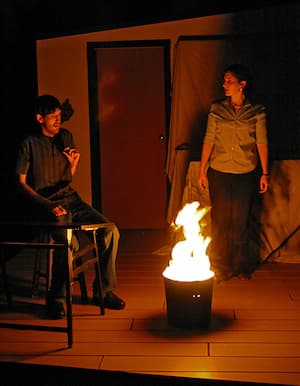

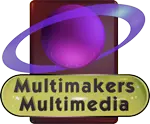 © Multimakers Multimedia
© Multimakers Multimedia